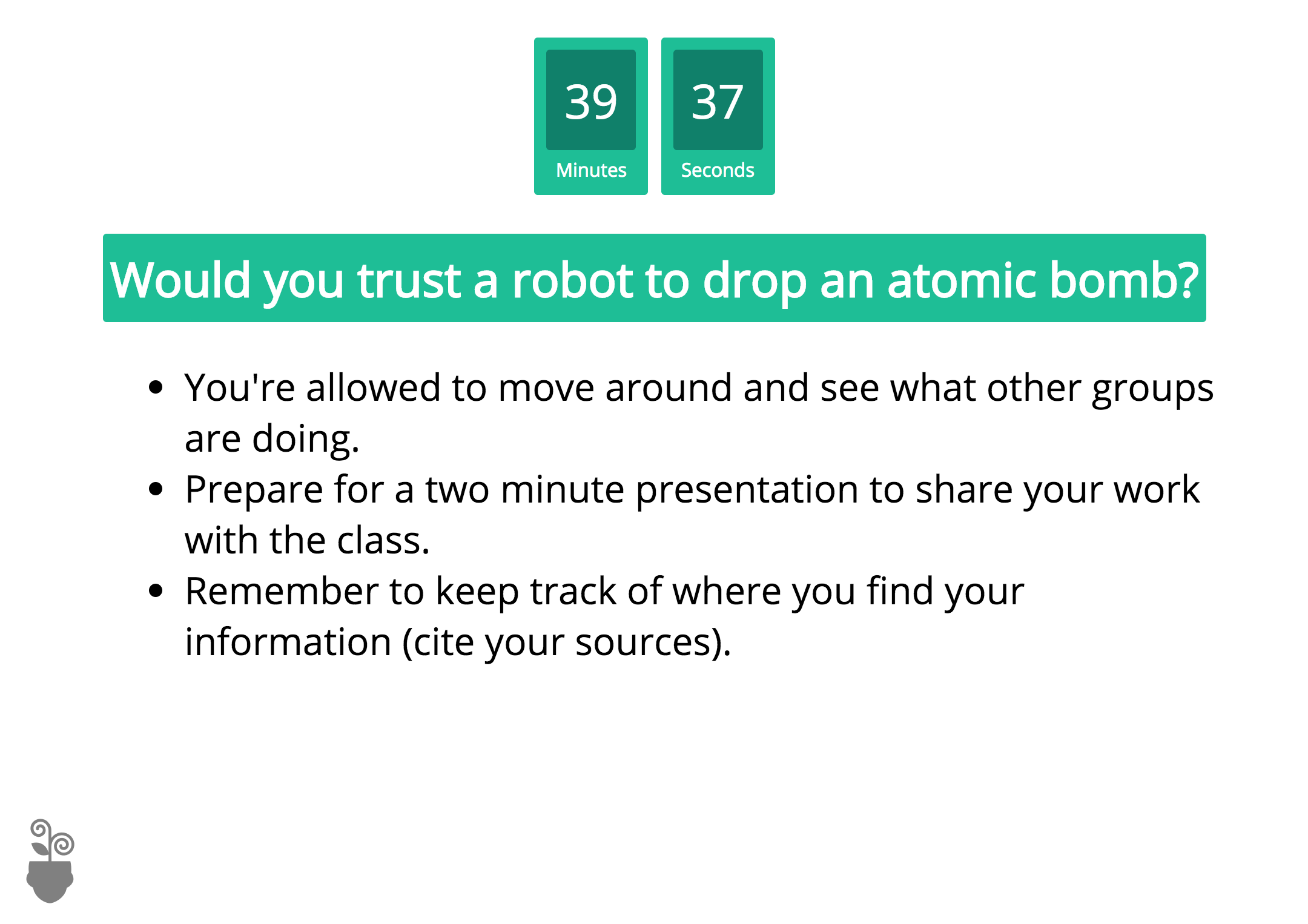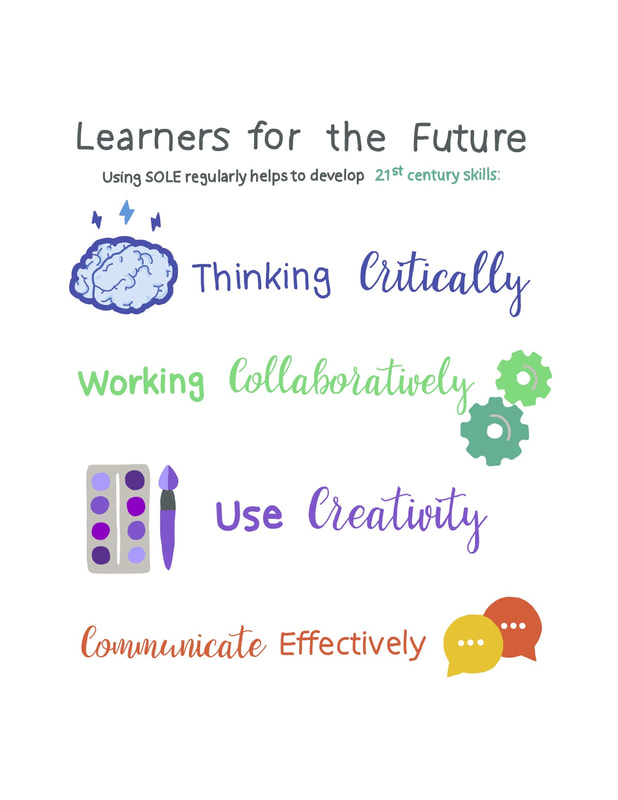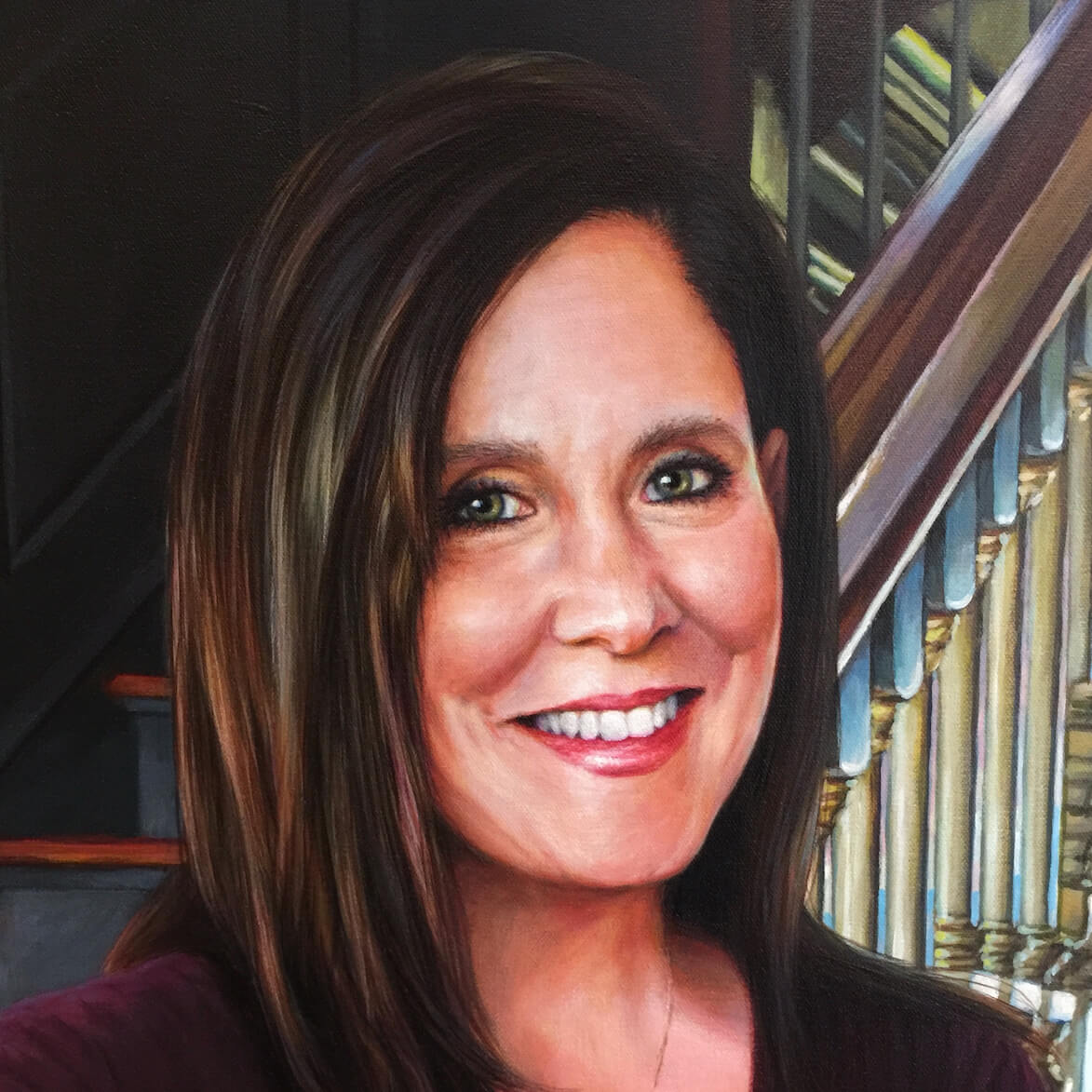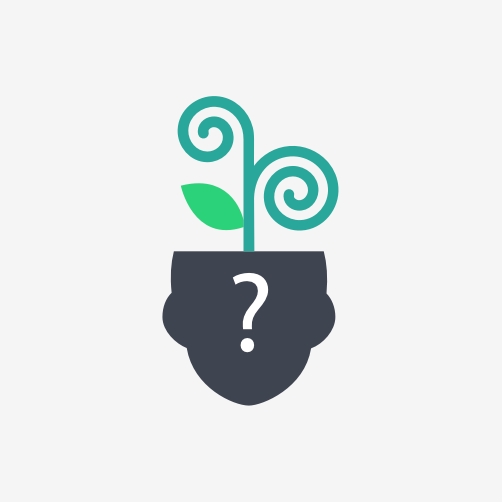Every Friday our DLC team meets for our PLC time. Each week a different member of our team leads learning to continue our growth as digital learning coaches. This past Friday Sam Neal, the DLC at Mockingbird and Pinkerton, led learning on Self-Organized Learning Environments or SOLEs, which draw on student’s natural curiosity to create a dynamic space for them to learn, interact and develop critical problem-solving skills. Sam had our team experience a SOLE session and then during our reflect time we discussed the process and why it is beneficial for students to participate in these experiences.
There are three parts to a SOLE session. A big question, the investigation and a review.

PART 1: THE BIG QUESTION
During the Big Question the teacher asks the class the question, gives a little bit of background information if it is needed, states the working parameters and answers any clarifying questions.
Our big question really got us thinking. Good big questions do not have a correct answer. We had to pick a side and justify our answer. Sam gave us time to ask clarifying questions so we fully understood our task before the timer started.
PART 2: THE INVESTIGATION
Once Sam answered all of our clarifying questions she told us to get to work. We decided how to break into groups, we decided what resources to use to research our question and we decided how we wanted to present our findings to the larger group at the end.
The investigation time is ALL student driven. The teacher acts as a facilitator asking open supportive questions and giving encouragement.
In the Blues Brothers song Soul Man the second verse starts with the lyrics:
Got what I got the hard way And I’ll make it better each and every day…
The students might have a hard time organizing themselves, finding the best resources and working together to finish THE FIRST TIME. If they struggle and make mistakes they will learn from them and figure out how to be more successful in future SOLEs.

During our experience my team had a hard time getting started because we were busy debating what the “right” answer was. Once we realized we were starting to run out of time we had to put our differences aside and come to consensus quickly so we could complete our task. Once we had an “answer” we began researching through our district databases. This really put our communication, collaboration, creativity and critical thinking to the test. With only 25 minutes to complete the task we had to work hard to find information that would back up our theory. Then we had to quickly decide how to best represent our work so other people would understand it.
PART 3: REVIEW
In part 3, the review stage, the learners present their findings. This is the most important stage because this is where the learners have to figure out how to effectively communicate what they have found and how they found it. If the groups do not have a presentation, do not answer the big question or are presenting on a completely different topic that is OK! Each team has a chance to hear “I likes” and “I wonders” from the rest of the group. This is also the best stage to talk about goals for next time.
In our review stage it was really neat to see the different ways each group approached the big question. We all had the same “answer” but the lenses we looked at it through and our evidence was completely different. Our group chose to present using a GIF note (A note that uses GIFs to support our information) in Notability. We focused our findings on the “how” rather than the “why”. Even as adult learners we had some wonders to consider for the next time we present information.
Being involved in a SOLE session really opened my eyes to a new way to approach integrating research, growing 21st century skills and tackling real world issues that correlate to our curriculum. SOLEs really allow learners to do what Mrs. Frizzle from the Magic School Bus always challenged us to do…
Take chances, make mistakes, get messy!
 Megan is a Digital Learning Coach for Coppell ISD in Texas. She graduated in 2011 from The University of North Texas with a Bachelors of Science in Interdisciplinary Studies. After getting her certification, Megan taught kindergarten and first grade dual language in Grapevine-Colleyville ISD for six years. When not at work, Megan enjoys spending time with friends and family, doing outdoor activities, and working out.
Megan is a Digital Learning Coach for Coppell ISD in Texas. She graduated in 2011 from The University of North Texas with a Bachelors of Science in Interdisciplinary Studies. After getting her certification, Megan taught kindergarten and first grade dual language in Grapevine-Colleyville ISD for six years. When not at work, Megan enjoys spending time with friends and family, doing outdoor activities, and working out.
This post originally appeared on her blog here.


